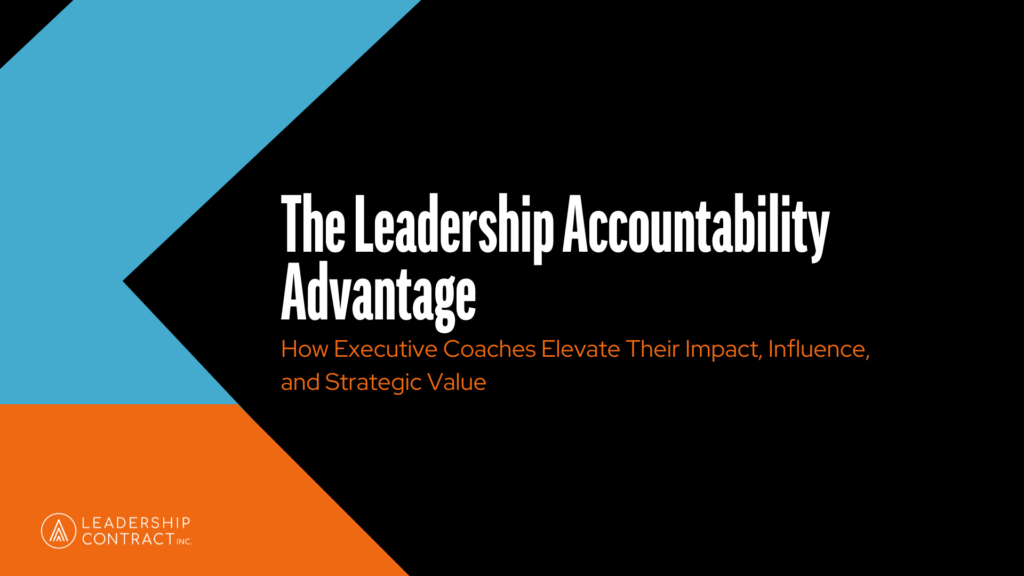It was a typical pre-interview with a CEO of a company my team and I were working with.
We were trying to get a handle on her company’s business context and strategy. She was two years into a major transformation.
I typically begin these discussions with an outside-in approach. I first explore the external forces facing leaders. Then I shift to discuss the business strategy and how the company intends to win. I conclude by exploring what the business context and strategy means for leaders of the company and how they need to step up.
I began the conversation with this CEO by identifying the external challenges she was facing. Her industry was facing tremendous disruption and change. What I immediately noticed was how quickly she shifted her response to internal and operational issues. I kept bringing her back to her external context, but she kept automatically raising internal issues. After about ten minutes of this, I stopped and said to her, “Do you notice what is happening?”
I explained how every time we started talking about the external challenges facing her company, she drew us repeatedly back to internal challenges, issues and frustrations. When I brought it to her attention, she didn’t even realize it and when she did, she was completely shocked by it.
This provoked a great discussion about her personal frustration as a leader. As the CEO, she knows that she needs to be focused on both external and internal issues, but she confessed that the internal issues consume her and her team.
She’s not the only CEO I’ve met who suffers with this same problem. Organizations, both big and small, have a lot going on and it’s easy to get caught up in all that internal stuff. The problem is that if all the senior leaders are so internally focused and stuck in the weeds of internal challenges, they cannot spot opportunities and potential threats.
In fact, my global research has found that one of the behaviors that distinguishes truly accountable leaders is their ability to display clarity about external trends in the business environment. It’s what sets them apart from unaccountable or mediocre leaders.
However, in my experience many leaders fall prey to this fixation on internal issues—at times to the exclusion of external forces. Why is this happening? I have a few theories:
- Leaders are ultimately paid to drive results. This focus on execution leads leaders to be heads down and focused internally rather than externally.
- There is a lot of complexity in organizations today that leaders must manage through. It typically results in a need for a never-ending number of meetings, calls, consultation with key stakeholders, fire-fighting, and resolving issues. While this work is necessary, it can cause a leader to be solely absorbed by internal challenges.
- Many leaders admit the reason they are obsessed with internal issues is that they do not have the team they really need. Having weak teams means leaders end up leading a few levels below where they should. And that means they have very little opportunity to get a high-level view of what’s going on outside the company.
- External work—like reading up on trends or networking in the market—is easier put on the back burner because it’s not seen as being urgent. It’s critically important, but easy to put off for something more pressing that comes into your inbox.
So, what’s a leader to do? Here’s what I have learned through my own experience and by watching some great leaders excel when faced with this challenge:
- Assess the current state: Look over your calendar from the last month. Identify how much time you spent on internal rather than external issues. Is it balanced? If you are like most leaders, I ask you to consider this question, you may be surprised to see how consumed you are by all things internal.
- Define your ideal state: Once you have done the assessment, think about what the ideal scenario is for you. No leader will be 100% focused on the external but being 100% focused on the internal isn’t going to make you successful.
- Commit to change: Develop the habit of spending time on activities that help you become more externally focused. Even if something more pressing is coming at you, resist the temptation to be sucked into it. In a recent blog, I shared some ideas that you can easily adopt in your own role.
- Strengthen your team: Leaders tell me that if their team was stronger, it would free them up considerably. If this is the case for you, then build the capabilities of your team members to deal with internal and operational issues. This will free you to focus more on anticipating and less on reacting.
One of the hallmarks of a truly accountable leader is being clear about the trends in one’s external business environment. Yet for many of us like the CEO I interviewed, we may have the intention but then get consumed by internal challenges, and we aren’t even aware of it. That’s the scary part. As a result, I believe it is critical that we routinely ask ourselves whether we are being consumed by all things internal. If you are, then you may not be creating enduring value as a leader.
Are you too internally focused?
Gut Check For Leaders








